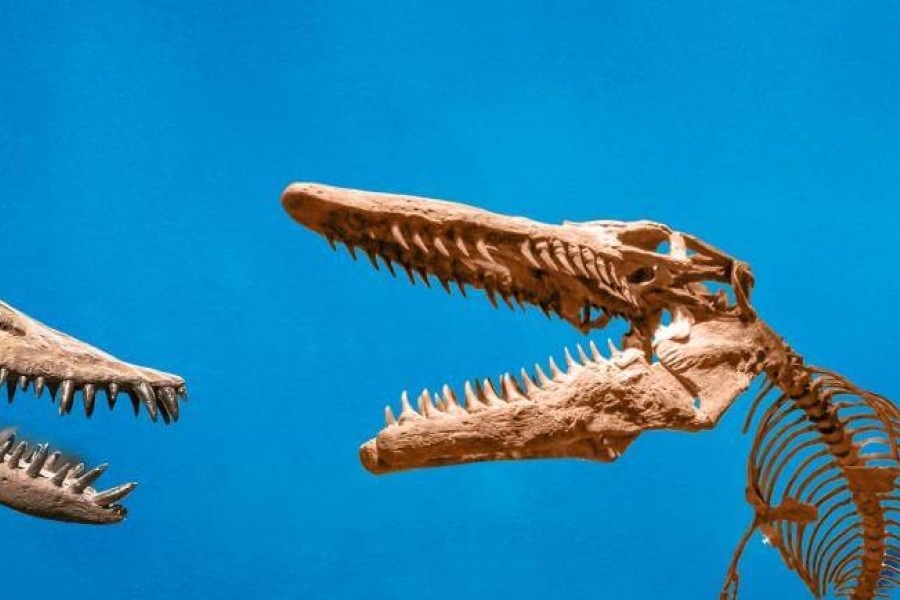Feb. 29-May 31: Savage Ancient Seas exhibit
Long ago in an ocean not so far away, turtles had 12-foot shells, seabirds had teeth, and “sea monsters” with powerful jaws prowled beneath the waves.
On Feb. 29 through May 31, 2020, Mote Aquarium visitors can peek into this ancient world—87-70 million years ago, during the Late Cretaceous—thanks to the special exhibit “Savage Ancient Seas,” featuring replicated skeletons cast from the real fossils of extinct ocean animals.
“Savage Ancient Seas” will be included with normal admission to Mote Aquarium, which is open 10 a.m.-5 p.m. every day at 1600 Ken Thompson Parkway, Sarasota, FL, 34236.
Meet the sea monsters:
Below are just a few of the extinct animals whose skeletons will be featured at Mote. At the time when dinosaurs roamed North America, these ancient ocean creatures fought their own battle to survive in the Western Interior Seaway that covered most of the American Midwest between the Arctic Ocean and the Gulf of Mexico.
- Archelon ischyros was the largest sea turtle ever to prowl earth’s oceans. The largest specimen had a 17-foot flipper span! It might sound formidable, but it probably wasn’t the fiercest predator of its time. It might have eaten animals like crustaceans, mollusks and jellies—the types of animals that several modern sea turtles eat.
- Hesperornis regalis was a flightless bird who swam the ancient seas and likely used its beak full of teeth to grasp slippery fish. No birds alive today have teeth. Hesperornis could swim hundreds of miles from the coast in search of food.
- The Manitoba pliosaur, a rare specimen of ancient reptile, is believed to have been a top predator in the early years of the Western Interior Seaway. You might call it a sea monster that preyed upon other sea monsters! It had stout teeth and strong jaw muscles.
- What about dinosaurs? Except for the birds, there are no dinosaurs in this exhibit. The skeletons in this exhibit come from ocean animals. Dinosaurs lived on land and are only very distantly related to marine reptiles like mosasaurs and plesiosaurs.
@MoteMarineLab #splashintothepast
